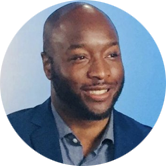
““Because of the stigma within the BIPOC communities, services are not utilized or under-utilized. It is challenging to advocate for the improvement of services when there is insufficient utilization to support the requested improvements.”
– Thommi Lawson, PhD, LPC (ConnectGrowThrive.me)

““I believe it will take practitioners and national organizations to embody a wholistic identity of social justice, healing practices, and interrogating systems of oppression. An authentic identity within the counseling professional means
focusing on diversity, equity, and inclusion at the national, state, and local level. It will mean a member of the mental health profession should interrogate spaces to exam if anti-racism, anti-blackness, and equity are housed within themselves
and each level in the nation. This means self-examination, research, and educating ourselves to better understand oppressive systems, narratives, and practices. Additionally, centering BIPOC people in mental health conversations by asking leaders
and individuals in the community to be present at leadership meetings, conferences, and ongoing conversations.
Voices within BIPOC communities should be consistently heard to understand the present and historical narratives. Furthermore, creating opportunities to engage indigenous communities by speaking to leaders, elders, and others who can bring a voice
to the community. Listening to their voice and what they believe can be done to improve, align, and create the quality of care.”
– Rufus Tony Spann, PhD, LPC (@RufusSpann)